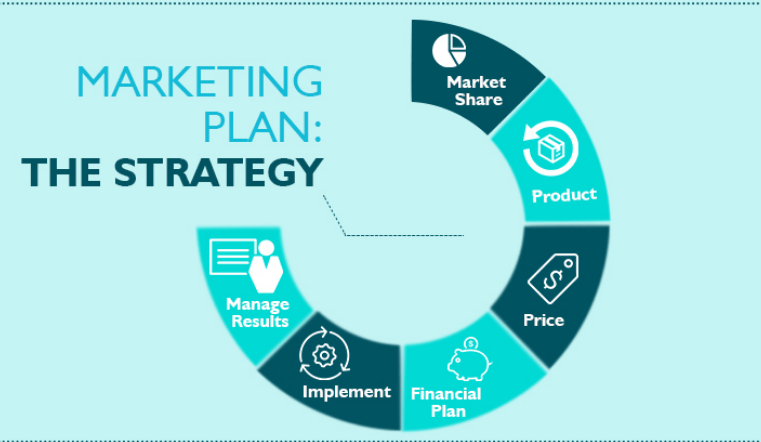Creating a successful marketing plan for your business involves a strategic approach to identify your goals, target audience, marketing channels, tactics, and metrics for success. Here’s a step-by-step guide to help you create a comprehensive marketing plan:
Define Your Business Objectives:
Start by clarifying your business objectives and marketing goals. Determine what you want to achieve with your marketing efforts, whether it’s increasing brand awareness, generating leads, driving sales, or improving customer retention.
Know Your Target Audience:
Identify your target audience and understand their demographics, preferences, behaviors, and pain points. Develop detailed buyer personas to tailor your marketing strategies and messages to resonate with your audience effectively.
Conduct a SWOT Analysis:
Analyze your business’s strengths, weaknesses, opportunities, and threats (SWOT) to identify internal capabilities and external factors that may impact your marketing strategy. Use insights from the SWOT analysis to capitalize on strengths, address weaknesses, seize opportunities, and mitigate threats.
Research Your Market and Competitors:
Conduct market research to understand industry trends, market dynamics, customer needs, and competitive landscape. Analyze your competitors’ marketing strategies, positioning, strengths, and weaknesses to identify gaps or opportunities for differentiation.
Set SMART Goals and Objectives:
Establish specific, measurable, achievable, relevant, and time-bound (SMART) goals and objectives for your marketing plan. Define key performance indicators (KPIs) to track progress and evaluate the success of your marketing efforts.
Develop Your Marketing Strategy:
Based on your objectives, target audience, and competitive analysis, develop a comprehensive marketing strategy that outlines how you will achieve your goals. Determine which marketing channels, tactics, and messaging strategies you will use to reach and engage your target audience effectively.
Allocate Budget and Resources:
Determine the budget and resources required to execute your marketing plan effectively. Allocate funds for various marketing activities such as advertising, content creation, social media management, email marketing, and analytics tools. Prioritize investments based on the expected return on investment (ROI) and alignment with your objectives.
Create a Tactical Marketing Plan:
Develop a tactical marketing plan that outlines specific actions, timelines, responsibilities, and budgets for each marketing initiative. Define the sequence of activities, deadlines, milestones, and deliverables to ensure smooth execution and accountability.
Implement Your Marketing Plan:
Execute your marketing plan according to the tactical timeline and action steps outlined. Coordinate with internal teams, external partners, vendors, or agencies to execute marketing activities efficiently. Monitor progress, track performance metrics, and make adjustments as needed to optimize results.
Measure and Evaluate Results:
Continuously monitor and measure the performance of your marketing efforts against established KPIs. Use analytics tools, dashboards, and reports to track key metrics such as website traffic, lead generation, conversion rates, engagement, and ROI. Evaluate the effectiveness of your marketing strategies and tactics and identify areas for improvement.
Iterate and Optimize:
Based on performance data and insights, iterate and optimize your marketing plan to enhance effectiveness and maximize results. Test different marketing strategies, messaging variations, and channel combinations to identify what works best for your business. Continuously learn from successes and failures, adapt to changing market conditions, and refine your approach over time.
Stay Agile and Adaptive:
Remain flexible and open to adjusting your marketing plan in response to evolving trends, consumer preferences, industry dynamics, and competitive pressures. Stay proactive, agile, and adaptive to capitalize on opportunities and address challenges in the dynamic marketing landscape.
By following these steps and taking a strategic approach to creating and implementing your marketing plan, you can effectively reach your target audience, achieve your business objectives, and drive sustainable growth and success for your business.









